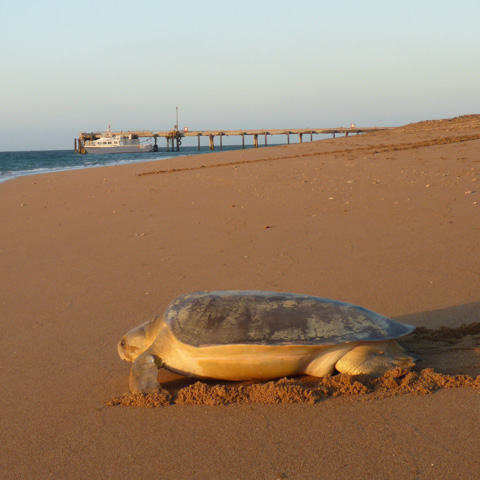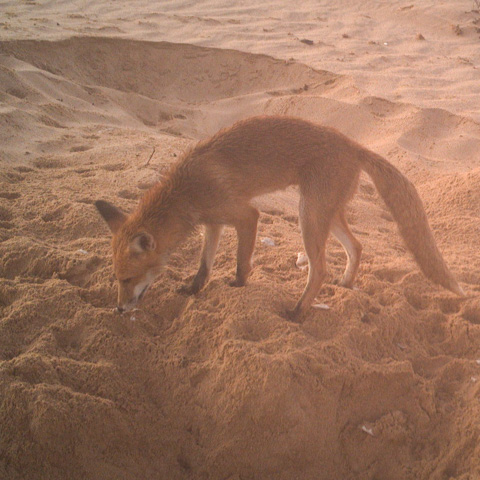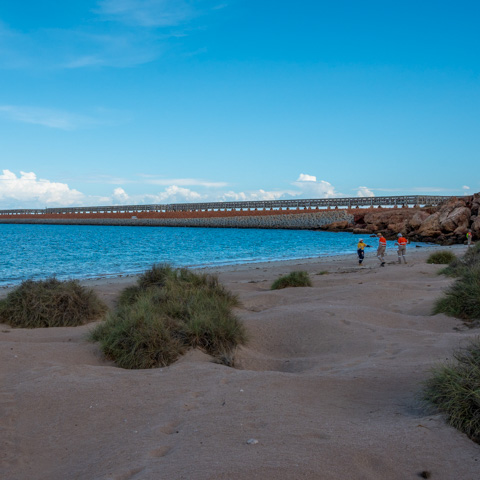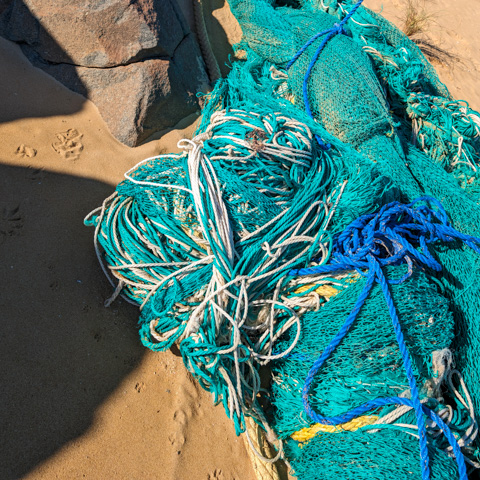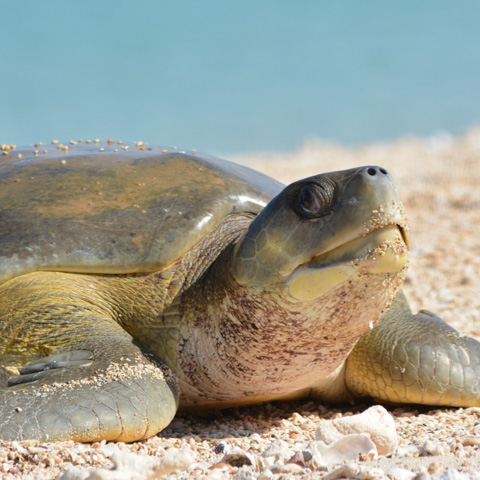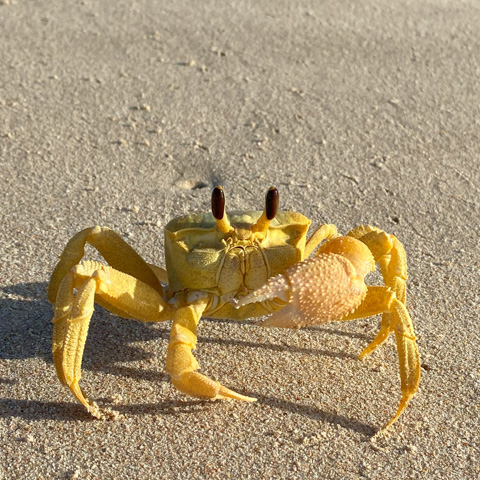Climate change threatens flatback turtle biology and physical environments
Marine turtles are particularly susceptible to environmental change as they are ectotherms (cold-blooded) and cannot easily adapt to fast-changing conditions. Climate change is a significant threat to flatback turtle nesting beaches and the nests themselves, affecting nest viability and the outcomes of incubating embryos. A clear understanding of how the climate and physical environment is likely to change across the North West Shelf, the impacts of increasing temperature, erosion and inundation on flatback turtles, and which mitigation actions will be required is essential to maintain future flatback turtle populations.
What we know so far
The NWSFTCP aims to understand the impacts of climate change on flatback turtle biology and North West Shelf nesting beaches, including the identification and prioritisation of nesting beaches that will maximise conservation outcomes.
Modelling has revealed that increasing average air and sand temperatures, sea level rise, and severe storms are significant threats to the survival of flatback turtle embryos. An understanding of sand temperature and metabolic heat (heat produced by the eggs during incubation) has informed the modelling of future temperature impacts within nests and across beaches. Significantly, research has shown that thermal thresholds are not the same for each nesting stock, suggesting that climate change will not affect all nesting beaches in the same way and a stock-level understanding is essential for mitigating future impacts and maximising conservation outcomes.
Nest heat climate change video to go here
Research highlights
As the sex of hatchlings and their likelihood of survival is dependent on the temperature of their nest, an understanding of how a warming climate will affect nest temperatures is critical. Previous studies have shown a decline in emergence success from nests with sand temperatures above 31°C, while mostly females are produced from warmer nests.
Researchers predicted hourly sand temperatures at 402 flatback turtle nesting beaches across Western Australia’s Pilbara region. The average sand temperatures were predicted for three climate change scenarios at 10 of these beaches: the “current” climate (1986 – 2015 average); and two future scenarios where average air temperature was 2°C or 4°C higher.
Under the current climate, hatchling emergence success averages 76% across modelled sites. As air temperature (and therefore nest temperature) increases, emergence success is predicted to decrease to 63% (2°C) or 37% (4°C). Expected outcomes are not uniform however, and some cooler beaches will continue to support male production under future warming climates. By triaging Pilbara beaches into three management categories – protect, monitor and mitigate – this research enables the prioritisation of strategies for the management of flatback turtle nesting beaches depending on their future thermal risk.
This research was led by The University of Western Australia’s Oceans Institute, in collaboration with DBCA/NWSFTCP, The University of Western Australia’s School of Biological Sciences and The University of Massachusetts Amherst.
Erosion and inundation of sandy beaches is a key threat to marine turtle populations globally. During extreme weather, high tides and waves can flood nests, either drowning eggs or heightening the risk of fungal infection. Sand is also eroded from the beach which reduces habitat for nesting.
An assessment of the coastal vulnerability of flatback turtle nesting sites in the Pilbara found that 36% of the most abundant nesting beaches used by flatback turtles had high exposure to erosion and inundation, indicating that this is a significant threat to the reproductive success of this stock. Nesting sites on small, flat islands are most vulnerable, while larger islands are most resilient. Understanding which beaches are resilient and which are most vulnerable to the effects of erosion and inundation under climate change scenarios enables conservation managers to plan for protections of resilient beaches, ensuring that turtles can access suitable nesting beaches into the future.
This research was led by The University of Western Australia’s Oceans Institute, in collaboration with DBCA/NWSFTCP.
The sex of marine turtles is determined by the temperature of the nest during development, known as “temperature-dependent sex determination”. By incubating flatback turtle and green turtle eggs at a range of temperatures and comparing embryonic development time and resulting sex ratios of each clutch, researchers investigated whether different marine turtle species respond in the same way to similar incubation temperatures.
The results show that there are differences between marine turtle species, but also within species. This suggests that climate change may not affect all species and populations in the same way, and that a stock-level understanding of the physiological thermal thresholds will be imperative for effective conservation management.
This research was led by the University of Western Australia, in collaboration with DBCA/NWSFTCP.
It is understood that the temperature of turtle nests influences the development and survival of embryos, but little is known about how the metabolic heat produced by the developing embryos themselves affects this. While existing modeling methods predict sand temperatures well, the inclusion of temperature variation from metabolic heat throughout development has helped to refine these models. As flatback turtles have the largest hatchlings of all seven marine turtle species, they were an excellent candidate for quantifying this effect.
Researchers studied the embryonic metabolic rates, development rates, and the relationship between temperature and sex determination for a flatback turtle population at Cemetery Beach, Port Hedland. The results indicate that metabolic heat produced by the embryos in a clutch has a perceptible impact on nest microclimates and will have implications for embryonic survival and fitness under a warming climate. Interestingly, the peak development rate for the Cemetery Beach population differed to that of a nearby population at Thevenard Island, adding to the growing consensus that thermal thresholds vary among marine turtle populations, even within the same genetic stock.
This research was led by The University of Western Australia’s Oceans Institute, in collaboration with DBCA/NWSFTCP, The University of Western Australia’s School of Biological Sciences and University of Massachusetts Amherst.
Publications
2024
2023
- Adaptation of sea turtles to climate warming: Will phenological responses be sufficient to counteract changes in reproductive output?
- Vulnerability of sea turtle nesting sites to erosion and inundation: a decision support framework to maximize conservation
2021
2020
- Microclimate modelling of beach sand temperatures reveals high spatial and temporal variation at sea turtle rookeries
- Variation in thermal traits describing sex determination and development in Western Australian sea turtle populations
- A systematic review of metabolic heat in sea turtle nests and methods to model its impact on hatching success
2014
Researchers

Dr Scott Whiting
Principal Research Scientist
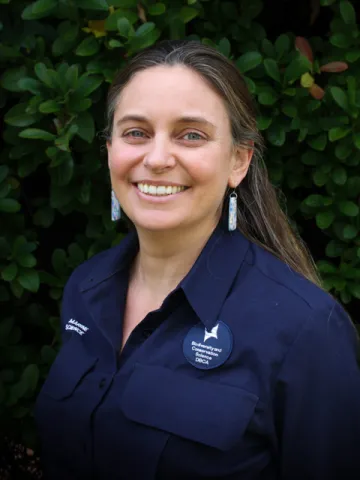
Dr Sabrina Fossette
Senior Research Scientist






